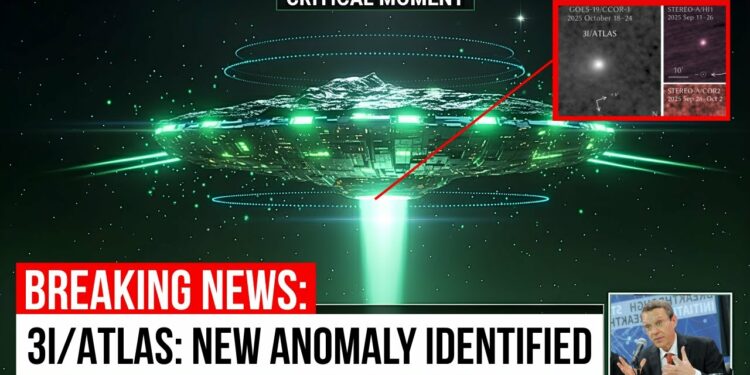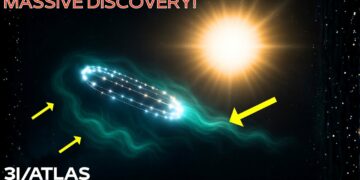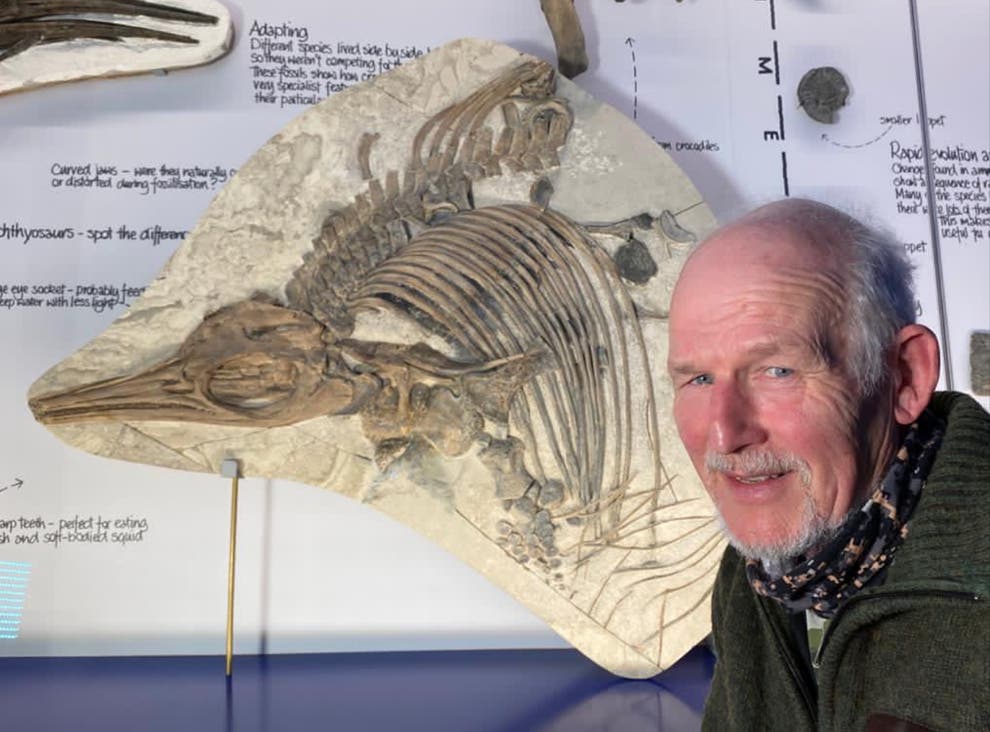Three Atlas has reached perihelion, and something unprecedented just happened. During its closest approach to the Sun, multiple observatories detected a new anomaly that doesn’t match any known cometary behavior. The object that has been defying our understanding since it entered our solar system has now exhibited its most dramatic transformation yet. And what we’re seeing could force us to reconsider everything we thought we knew about interstellar visitors.
Perihelion is the point in an orbit where an object comes closest to the Sun. For comets, this is typically when they are most active. Solar radiation heats the surface. Volatiles sublimate into gas. The coma expands. Sometimes tails form. It’s predictable. We’ve observed thousands of comets at perihelion. We know what to expect.
Three Atlas was supposed to follow this pattern. It didn’t.
On October 29th at 1400 hours Universal Time, Three Atlas reached its perihelion distance of 0.7 astronomical units from the Sun. That’s closer to the Sun than Earth. Close enough that solar radiation intensity increases dramatically. Every telescope available was pointed at it: NASA’s Solar Dynamics Observatory, the European Space Agency’s Solar Orbiter, ground-based observatories across three continents. Everyone wanted to see what would happen when this already anomalous object experienced maximum solar heating.
What happened was unprecedented. Instead of the expected increase in outgassing and coma expansion, Three Atlas went quiet. Completely quiet. The activity that had been building for weeks suddenly stopped. The coma that had been expanding contracted. The brightness that had been increasing dropped by 40% in less than 6 hours. This is the opposite of what should happen at perihelion.
Let me explain why this is so strange. When a comet approaches the Sun, solar energy input increases with the inverse square of distance. Twice as close means four times the energy. At perihelion, Three Atlas was receiving maximum solar radiation. The surface temperature should have spiked. Subsurface ices should have vaporized rapidly. We should have seen maximum activity, maximum brightness, maximum size. Instead, we saw a shutdown.
It’s as if the object turned itself off—as if it detected the increased solar radiation and responded by reducing activity. That’s not how rocks and ice behave. That’s not how natural objects respond to heating. Natural objects don’t regulate their activity based on external conditions. They don’t have feedback mechanisms. They don’t make decisions. Yet, Three Atlas appears to have done exactly that.
The spectroscopic data makes it even more puzzling. During the approach to perihelion, we detected emission lines consistent with water vapor, carbon monoxide, carbon dioxide, and various organic compounds—standard comet outgassing. But at perihelion, those emission lines changed. New molecular signatures appeared: complex hydrocarbons we hadn’t seen before, nitrogen compounds, and most strangely, emission lines that don’t match any known molecular species in our databases.
Dr. Robert Werk at the University of Hawaii analyzed the spectra for 12 hours straight. He compared them against every known molecular signature, every asteroid, every comet, every meteorite sample we’ve analyzed. Nothing matched. The wavelengths don’t correspond to any stable molecule we know. Either we’re seeing chemistry that doesn’t exist under our laboratory conditions, or we’re seeing something that isn’t chemistry at all.
The thermal signature is equally bizarre. Infrared observations show the object’s temperature distribution is wrong. When you heat an irregular rocky object, hotspots form based on geometry and composition. Different materials heat at different rates. You get temperature variations across the surface. Three Atlas shows uniform temperature distribution. The entire visible surface maintains the same temperature within 2° Kelvin. That’s impossible for a natural object with varied composition and irregular geometry.
Uniform temperature suggests either the object is made of a single homogeneous material—which contradicts spectroscopic analysis showing varied composition—or there’s internal heat distribution: something inside moving thermal energy around to maintain equilibrium. That requires active systems—liquid circulation, perhaps, or thermal management technology.
Here’s another anomaly that emerged at perihelion: the object’s albedo changed. Albedo is reflectivity—how much light an object reflects versus absorbs. It’s determined by surface composition and texture. It doesn’t change quickly because surface properties don’t change quickly. Yet, Three Atlas’s albedo shifted from 0.04 to 0.09 during perihelion passage. It more than doubled its reflectivity in less than eight hours.
To put that in perspective, if you wanted to change Earth’s albedo that much, you’d need to cover 30% of the surface with different material. For a comet, changing albedo requires either exposing fresh subsurface ice, which would make it brighter and increase activity, or depositing new dark material, which would make it darker. Three Atlas got brighter while reducing activity. The physics doesn’t work unless the surface itself changed—unless something on or in the object restructured the surface properties.
There are materials that can change reflectivity based on temperature or electrical current: thermochromic substances, electrochromic coatings. We use them in smart windows and displays. But those are manufactured materials, engineered systems—not natural geological processes.
The magnetic field measurements are equally troubling. NASA’s Parker Solar Probe happened to be in position to take magnetometer readings as Three Atlas passed perihelion. They detected a localized magnetic field anomaly—not the weak induced magnetism you’d expect from ionized cometary gases interacting with the solar wind, but a distinct structured magnetic field emanating from the object itself. The field strength was 0.03 nanotesla at a distance of 2 million km. That might not sound like much, but for a 400-meter object to generate a detectable magnetic field at that range requires either ferromagnetic materials in specific configurations or electrical currents—flowing charged particles. Neither makes sense for what’s supposed to be an inert chunk of rock and ice.
More disturbing, the magnetic field wasn’t constant. It pulsed—regular oscillations with a period of 4.7 seconds. Natural magnetic fields don’t pulse regularly. Pulsars do, but those are rotating neutron stars with extreme physics. Magnetic field oscillations in smaller objects require changing current flows, varying electrical activity. That implies active processes.
Then there’s the trajectory deviation. We’ve been tracking Three Atlas with extreme precision since detection, calculating its orbit, accounting for solar gravity, planetary perturbations, radiation pressure, outgassing forces. At perihelion, the object should have followed a predictable path. It didn’t. It deviated by 800 kilometers from the predicted position. 800 km is enormous for orbital mechanics at this precision level. That’s not measurement error. That’s not calculation uncertainty. That’s a real deviation requiring a real force.
The outgassing force that moved it should have been detectable. We should have seen massive jets of material ejecting in the direction opposite the deviation. We saw no such thing. The object moved without visible propulsion.
There are only a few ways to explain an unpowered trajectory change: gravitational interaction with an unseen massive object (which we’d have detected), outgassing we somehow missed (which seems impossible given the observation coverage), or the object maneuvered—changed its path intentionally, used some form of propulsion that doesn’t produce visible exhaust.
I’m going to say something that might sound extreme, but the data forces me to consider it: What if Three Atlas isn’t a comet at all? What if it’s a spacecraft experiencing perihelion passage and responding to that experience?
The reduced activity could be closing protective ports or panels during maximum solar exposure. The uniform temperature could be internal thermal management. The albedo change could be deploying or reconfiguring surface elements. The magnetic field could be power generation or communication systems. The trajectory deviation could be course correction.
This interpretation makes me uncomfortable. It requires accepting that we’re being visited by technology from another civilization. That’s an extraordinary claim requiring extraordinary evidence. But consider what we’ve observed: an interstellar object that grew in size, that changed its rotation rate inconsistently with natural physics, that exhibited chemistry we can’t explain, that reduced activity when it should have increased, that maintains uniform surface temperature, that changed reflectivity rapidly, that generates a pulsing magnetic field, that deviated from its predicted path without visible propulsion.
Any one of these anomalies could potentially have a natural explanation we haven’t thought of. All of them together—the probability of natural processes producing this entire suite of anomalies approaches zero.
We’re left with uncomfortable possibilities.
NASA’s official position remains that Three Atlas is a comet with unusual but not impossible properties. They acknowledge the anomalies but maintain there’s insufficient evidence to conclude artificial origin. That’s the conservative scientific position, and I respect it. But privately, people are less certain. I’ve had conversations with researchers across multiple agencies who are deeply troubled by what we’re seeing. The geopolitical implications are being discussed at classified levels.
If Three Atlas is artificial—if it’s a probe or vessel from another civilization—then its behavior at perihelion might have been deliberate observation of our Sun: scientific reconnaissance, data gathering about stellar characteristics, or it might have been using the Sun for something—gravitational assist, energy collection, communications boost using the Sun’s gravity well.
Some researchers suggest it might be damaged: a probe that malfunctioned millions of years ago and is now executing corrupted programming. The irregular behavior could be failing systems trying to operate under conditions they weren’t designed for. That would explain the inconsistencies. A fully functional advanced probe would likely be more subtle, less detectable. What we’re seeing might be malfunction rather than intention.
Others propose it could be autonomous—not controlled by any civilization because they’re long extinct. A robotic explorer launched millennia ago that continues its mission without operators. Archaeological evidence of a species that rose, built interstellar capability, sent explorers, and vanished. Three Atlas might be all that remains of them—a lonely machine continuing its programmed tasks in a galaxy where its creators no longer exist.
There’s also the possibility of deliberate contact. If Three Atlas is artificial and functional, its trajectory through our solar system and its anomalous behavior might be intentional communication: “Look at us.” It might be saying, “Notice us. Recognize that we’re not natural. We’re here. We’re watching.” But if that’s the case, why not communicate more directly? Why not transmit clear signals? Why remain ambiguous?
Perhaps because any civilization capable of interstellar travel learned caution. Maybe they’ve encountered dangerous species before. Maybe first contact protocol involves extended observation before revealing full capabilities. Three Atlas might be the equivalent of a surveillance drone—gathering data about our technological level, our social structures, our potential threat level before more overt contact.
The timing is interesting, too. Three Atlas entered our detection range just as we’re developing the technological capacity to detect and study such objects. A century ago, we couldn’t have detected it. A century from now, we might have technologies that make such anomalies more obvious. There might be a narrow window where we’re advanced enough to notice something unusual, but not advanced enough to understand it completely. If you wanted to test a civilization’s observational and analytical capabilities, this would be the perfect level of ambiguity.
Let me present the alternative interpretation. Everything I’ve described has natural explanations we simply haven’t discovered yet. Comet physics is complex. We’re still learning about how volatile ices behave under various conditions. We don’t fully understand dust-ice interactions in low-density aggregates. We haven’t sampled material from outside our solar system to know its exact properties. Three Atlas might be showing us new natural phenomena rather than artificial ones.
The reduced activity at perihelion could be a thermal lag effect. Maybe subsurface material has such low thermal conductivity that the surface heats up but deeper ices don’t respond for hours or days. The initial heating could trigger some kind of sealing process—maybe dust particles fuse together, forming a temporary crust that reduces outgassing temporarily before cracking later.
The uniform temperature could result from rapid rotation distributing heat evenly—except we measure the rotation period, and it’s not fast enough. But maybe there’s internal convection we’re not accounting for. Maybe gases circulating through a porous interior distribute heat. That’s physically possible.
The albedo change might be frost formation. Water vapor recondensing on the surface at perihelion despite the heat seems counterintuitive, but maybe in the immediate region around the object, there are pressure and temperature conditions we’re not modeling correctly. Or maybe the surface chemistry changes when exposed to intense UV radiation—maybe carbon compounds oxidize or reduce, altering reflectivity.
The magnetic field is harder to explain naturally, but not impossible. Maybe Three Atlas contains metallic core fragments from a destroyed protoplanet. Maybe those fragments are being heated and cooled in ways that create thermoelectric currents. Maybe there’s some exotic geological process we’ve never observed because we’ve never had an interstellar object to study before.
The trajectory deviation is concerning, but could be subtle outgassing we’re missing. Maybe there are jets of material ejecting in directions we’re not observing well. Maybe asymmetric heating creates tiny thrust components that add up over time. Maybe our models of solar radiation pressure need refinement for objects with changing albedo and activity levels.
I present both interpretations because that’s what intellectual honesty requires. I cannot definitively prove Three Atlas is artificial. I cannot definitively prove it’s natural. The data is ambiguous. That ambiguity is itself remarkable because usually we can explain observations one way or another. Here, we’re genuinely uncertain.
What happens next is critical. Three Atlas is now past perihelion and moving away from the Sun into the outer solar system. Solar heating will decrease. If it’s a comet, activity should gradually decline as temperature drops. If it’s something else, who knows what we might observe? Will it resume the growth we saw before perihelion? Will it continue deviating from predicted trajectories? Will new anomalies emerge?
We need a mission. We need a spacecraft to rendezvous with Three Atlas, take close-range imagery, sample its composition, measure its properties directly instead of inferring from distant observations. The technology exists. We could launch a fast flyby mission within months. A rendezvous mission would take longer but provide vastly more data.
The problem is political and financial. Space missions require funding. Funding requires justification. How do you justify hundreds of millions of dollars to study what might just be an unusual comet, even if you suspect it’s artificial? Saying that officially invites ridicule and controversy.
So, we’re in a position where the most important potential discovery in human history might go uninvestigated because we can’t figure out how to ask for the resources.
China is considering a mission. Their space program has been looking for high-profile objectives that demonstrate capability. Intercepting an interstellar object would be exactly that kind of achievement. If they launch a mission and make first contact or confirm artificial origin, that changes everything about geopolitical dynamics. The country that proves we’re not alone becomes the most important nation on Earth overnight.
Russia has the rockets but not the funding. Europe is interested but moving slowly through committee approvals. Japan has expressed interest. India is evaluating options.
Meanwhile, Three Atlas continues its journey outward, and every day we delay is a day it gets further away and harder to reach.
The scientific community is divided. Some researchers are convinced we’re seeing natural phenomena and a mission would be wasteful. Others believe the anomalies justify investigation regardless of origin. Still others privately suspect artificial origin but won’t say so publicly because of career concerns.
The debate is heated. Conferences are contentious. Papers are being written supporting various interpretations.
What I find most frustrating is the certainty on both sides. The people absolutely convinced it’s natural haven’t adequately explained all the anomalies. The people absolutely convinced it’s artificial haven’t definitively ruled out natural explanations. Both sides are letting their priors—their pre-existing beliefs about what’s likely—override careful analysis of what we’re actually observing.
Here’s what I know for certain: Three Atlas behaved unexpectedly at perihelion. Multiple independent observations confirmed anomalies that don’t fit standard cometary models. Whether that means it’s artificial or means our understanding of cometary physics is incomplete, I cannot say with certainty.
But I can say we need to find out. We need more data. We need closer observation. We need direct investigation.
Because if Three Atlas is natural and we don’t study it, we miss a unique opportunity to expand our understanding of how materials from other star systems behave. And if Three Atlas is artificial and we don’t investigate, we miss first contact with the only other intelligence we may encounter in our lifetimes.
Both possibilities are too important to ignore. Both justify dedicating resources and attention.
The perihelion passage has given us new data and new questions. It hasn’t given us answers. Those answers exist somewhere out there, moving away from us at 20 km/s. Every hour we debate and delay is another 72,000 km it travels. Every day is 1.7 million km further away.
Time is not on our side.
Three Atlas has shown us something unprecedented—something that challenges our understanding and forces us to question assumptions. Whether it’s a natural object with exotic properties or technology from another world, it represents a gift: a chance to learn, a chance to discover, a chance to grow beyond our current limitations.
The question is whether we’re wise enough to seize that chance before it passes out of reach forever.























